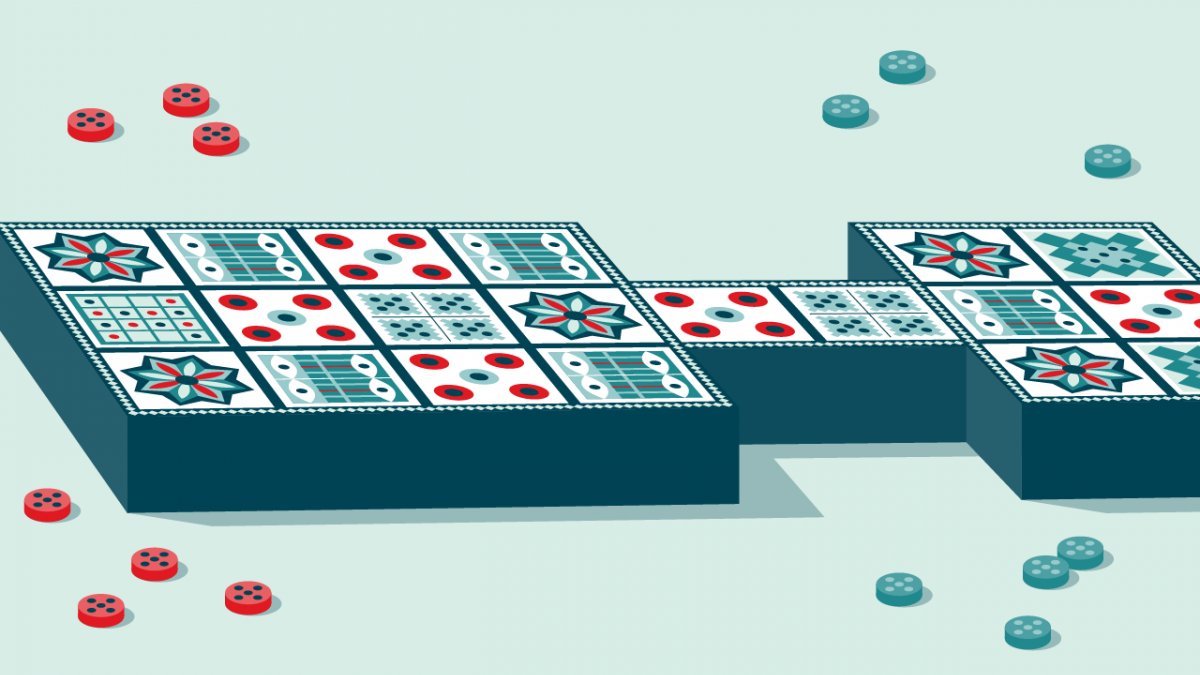In a series of articles, we are introduced to the surprisingly long and rich history of serious games.
In this first part, we learn how meaning has been embedded in games from the very beginning, as we are taken back to antiquity to find the first known learning game.
The Royal Game of Ur
The earliest known set of game rules is found on a Babylonian clay tablet inscribed with cuneiform characters in the year 177-176 BCE. One side of the tablet contains the rules for a simple game of chance, while the other side contains instructions on how to use the same game as a fortune-telling device.
The game in question is most probably The Royal Game of Ur which had been played in Mesopotamia since at least the middle of the 3rd millennium BCE. The layout of the game board appears to have been modelled on the incised sheep's livers used for divination by the priesthood. It has even been suggested that the earliest specimens of the game found in the Royal Cemetery at Ur formed part of the standard equipment of the priests buried there*.
The dual nature of games was a common feature in antiquity. In India the four world ages were named after the throws of dice, and in Egypt the game which the pharaos played with the god of death to secure safe passage to the afterlife was also enjoyed during lunch breaks by the workers who built their tombs.
Abstract games with symbolic meanings
The games that have come down to us from antiquity are what we today would call abstract games. They were laid out as simple grids which could be drawn on the ground with a stick or a piece of chalk. Pebbles, seeds, or shells were used as playing pieces, knucklebones and split reeds as dice. It might have taken an educated, or perhaps even an initiated, person to recognise the underlying symbolism, but even if most people did not, they would still somehow be engaging with cosmological, calendrical, and arithmetical systems every time they sat down to play.
Though the question remains whether such games were made to represent meaning, or whether meaning was only ascribed to them later on, it seems certain that the question did not arise in the minds of those who played them. The model was not considered to be any less real than the reality it modelled.
Learning depends on interpretation
Learning, we might say, was integral to the games of antiquity. Playing a game on a diagrammatic model of the universe enforced people's conception of the universe, just as having their fortunes told by a pair of dice enforced their identification of chance with fate.
”All play means something” as Huizinga wrote in ”Homo Ludens”. Meaning is imbedded in the games’ structure and what seems abstract on the surface can contain layers of meaning to the initiated.
Of course, game mechanics and representations have improved, enabling a tighter and more transparent integration of learning and gameplay. For example, in the change management game Wallbreakers™, Rick Maurer’s theory about employees’ resistance to change is explicitly represented on the game board. The players have to navigate a team of fictitious employees through a change process and the employees’ resistance to change (ranging from lack of information to lack of confidence in the company’s leadership) is a key component in the players’ decisions.
But just like in antiquity, a skilled facilitator will enable players to reflect on the play experience and get a much deeper understanding of the way the game relates to their reality. Then as now, games are only abstract to the extent that they are not interpreted. And what you learn from them depends on just how you do so.
* Becker, Andrea (2007) "The Royal Game of Ur" in Irving L. Finkel (ed.) Ancient Board Games in Perspective. London: British Museum Press, p.15.


